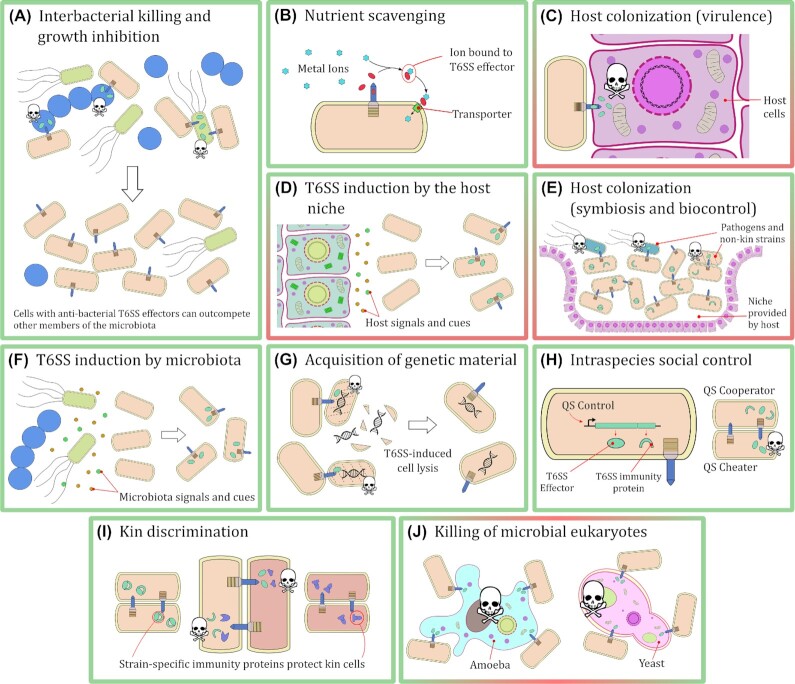Figure 2.
Known types of cellular interactions involving the T6SS. (A) The T6SS enables bacteria to outcompete other members of the microbiota by killing them or inhibiting their growth. (B) Effectors secreted by the T6SS (red ellipses) can sequester nutrients present in the environment and facilitate their transport into the secreting cell. (C) Bacteria can deliver T6SS effectors to host cells as a virulence mechanism during colonization. (D) Signalling molecules and metabolites found in the host environment can induce expression of the T6SS in bacteria. (E) Bacteria can use the T6SS to outcompete other members of the microbiota and colonize a niche provided by a host. Subsequently they can use the T6SS to prevent invasion by pathogenic organisms. (F) Members of the microbiota secrete signalling molecules and metabolites that can induce expression of the T6SS in bacteria. (G) Bacteria can use T6SS-delivered effectors to lyse related cells (non-kin); DNA released by this mechanism (black double helix) can then be acquired by the secreting cells. (H) Quorum sensing systems can enable policing of cheater cells by positively controlling the expression of T6SS effector and immunity genes (green boxes following black arrow). (I) Minor differences in T6SS effectors and immunity proteins allow otherwise isogenic cells to differentiate and kill each other. (J) The T6SS allows bacteria to kill microbial eukaryotes that may be competitors and predators. Throughout all panels, green ellipses represent T6SS effectors and green arcs represent T6SS immunity proteins. Panels with a green frame indicate interactions among bacteria only. Panels with red/green frames indicate interactions between bacteria and eukaryotes. Skulls represent cell death or growth inhibition by delivered T6SS effectors.

